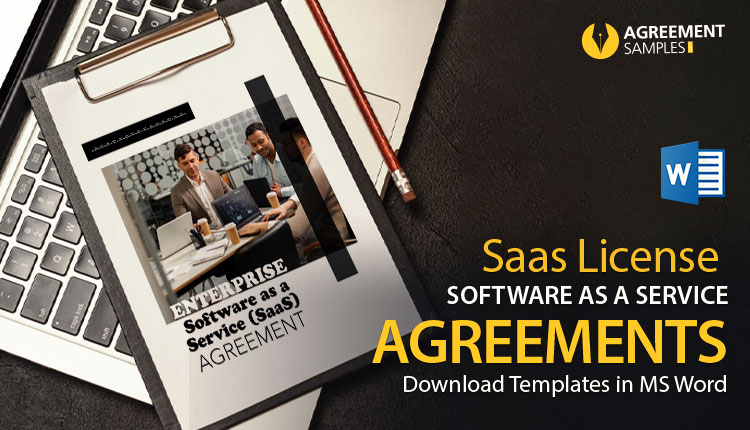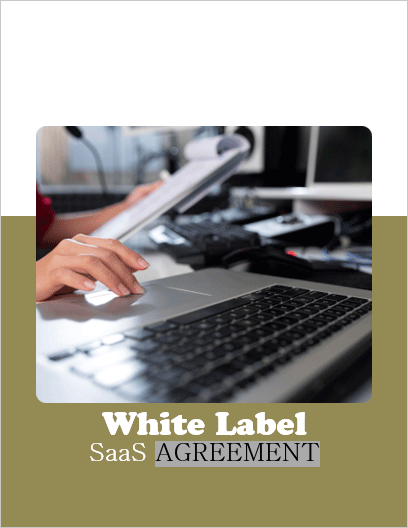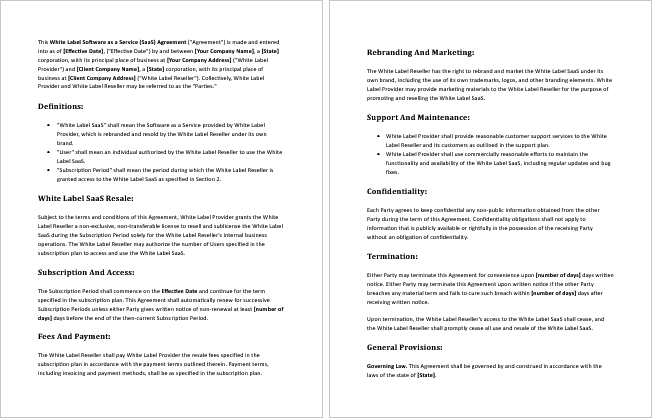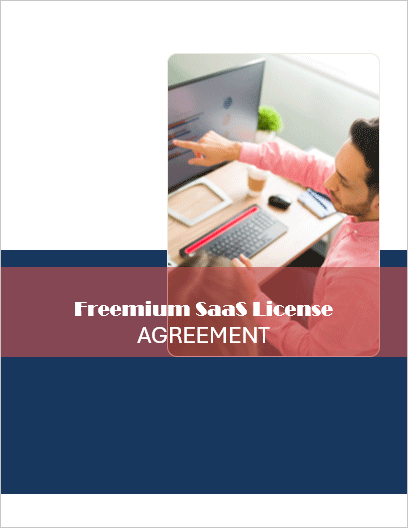Embark on an adventure of boundless innovation! Here, on this exclusive page, we unveil a treasury of Free SaaS Licenses – your tickets to a realm where creativity knows no limits. These licenses are not just keys; they’re gateways to a world where Software as a Service (SaaS) isn’t just a tool; it’s the very essence of fearless exploration. Additionally, explore our dedicated cover pages for each agreement, offering a curated introduction to the distinctive features and benefits of every SaaS license in our collection. Welcome to a sanctuary where SaaS licenses don’t just signify access; they symbolize the spirit of groundbreaking creativity.
Unleashing Creativity: A Canvas of Innovation with SaaS Licenses
Join us as we redefine the significance of SaaS licenses – they’re not mere facilitators; they’re the architects of innovation, empowering you to push boundaries and unleash your most audacious ideas. This is more than a page; it’s an invitation to a landscape where each license is a brushstroke, painting the canvas of your imagination with the vibrant colors of innovation.
Picture a key unlocking a realm of possibilities – that’s what a Software as a Service (SaaS) license represents in the digital realm. In essence, a SaaS license is your passport to explore and utilize cloud-based software services without the hassles of traditional installations.
At its core, a SaaS license is not just a permission slip; it’s an agreement that defines the terms of engagement between you and the provider of the cloud-based software. It’s the fine print that outlines the rules of the game, allowing you access to cutting-edge applications without having to invest in hefty infrastructure.
In this agreement, the licensor grants the licensee the right to access and use the software for a specified subscription period, detailing user licenses, fees, and payment terms.

Tailored specifically for large-scale operations, the agreement also talks about getting help when needed, keeping things confidential, and what happens if either party needs to end the agreement.

Think of it as a friendly guide that sets the terms for a smooth and secure collaboration between the company providing the software and the folks using it.

From how to get started with the service to what happens if there are issues, this agreement covers it all, providing a clear and fair understanding of the SaaS subscription for both the provider and the subscriber.

In summary, SaaS licenses bring a multitude of advantages to the table, ranging from the cost-effective nature of subscription-based models to the unparalleled scalability and accessibility they offer. Moreover, the availability of free SaaS licenses acts as a catalyst for innovation, ensuring that financial considerations don’t impede the exploration of groundbreaking ideas and solutions.
In simpler terms, it’s like a rental agreement for a digital space where different individuals or entities can access and use the software simultaneously.

Think of it as a personalized agreement that allows both the Software as a Service (SaaS) provider and the user to shape the terms based on their specific requirements.

Seamless Integration and Optimization: Embrace the full potential of your free SaaS licenses with these strategic tips on utilization. Begin by assessing the unique needs of your projects or businesses, ensuring a tailored approach to integration.
Develop strategies to enhance user adoption, ensuring that your team maximizes the benefits of the SaaS licenses.
Comparable to a handshake between the SaaS provider and the entities integrating their systems, this agreement fosters a harmonious collaboration by defining the terms for API utilization within the broader SaaS ecosystem.

In essence, it’s like a guidebook for a SaaS offering where the underlying source code is accessible and modifiable by users.

Integrating SaaS solutions effectively is key to unlocking their transformative power. Consider the following tips for a smooth and impactful integration.
By aligning your SaaS licenses with project specifics, fostering collaboration, optimizing user training, and implementing effective integration strategies, you pave the way for a seamless and impactful utilization of your licenses, ensuring they become transformative assets for your projects or businesses.
Picture it as a business collaboration where the SaaS provider remains behind the scenes, and the reselling company applies its branding, presenting the service as its own.

It’s a bit like having the best of both worlds – exploring the SaaS platform at no cost while having the option to enhance the experience with premium features, creating a balanced and user-friendly SaaS engagement.


This agreement not only defines the terms of access and usage for the industry-tailored SaaS but also intricately outlines user licenses, subscription periods, and other critical elements unique to that vertical landscape.

Visualize it as an adaptable agreement that accommodates a wide range of users with different requirements.

In the dynamic realm of technology, Software as a Service (SaaS) stands as a digital maestro, orchestrating a symphony of convenience and innovation. But what precisely qualifies as SaaS? Let’s embark on a journey to unveil the intricate layers of this digital tapestry.
At its core, SaaS is not merely software; it’s a paradigm shift in how we interact with and consume technology. So, what constitutes the quintessential SaaS experience?
In the grand canvas of digital transformation, SaaS is the artist, and its qualifications are woven into the very fabric of a user-centric, cloud-driven, and innovation-rich experience. It’s more than just software; it’s a symphony of accessibility, flexibility, and subscription-based brilliance, setting the stage for a digital future where technology dances to the rhythm of individual aspirations. Welcome to the world where SaaS isn’t just qualified; it’s the qualifier for a new era of digital possibilities.
Think of it as a digital handshake that outlines the terms and conditions for accessing and utilizing the SaaS platform.

Imagine it as a strategic alliance where the SaaS platform is specifically adapted for use by the MSP in delivering top-notch services to its clients.

In the vast digital landscape, Software as a Service (SaaS) and Platform as a Service (PaaS) emerge as distinct constellations, each illuminating a different facet of the technological cosmos. Let’s embark on a cosmic journey to explore the unique galaxies of SaaS and PaaS, decoding the differences that make each a star in its own right.
SaaS, akin to a pre-arranged cosmic tapestry, offers complete software solutions ready for exploration. It’s like entering a stargazing tour where the constellations are predefined – users access fully functional applications without worrying about the underlying infrastructure. Imagine gazing at a majestic constellation, and you’ll find the equivalent in SaaS – a ready-made, awe-inspiring experience without the hassle of crafting it yourself.
Now, shift your gaze to PaaS – the cosmic workshop where users sculpt their celestial wonders. In this realm, the platform is the canvas, and users are the architects. PaaS provides the tools and frameworks needed to build and customize applications, offering a celestial workshop where developers can craft their unique constellations. It’s not just about observing the stars; it’s about creating them and shaping the digital sky to align with individual visions.
In the grand cosmic tapestry of digital services, SaaS and PaaS shine as distinctive constellations. SaaS offers a ready-made observatory, inviting users to explore and marvel at predefined wonders. PaaS, on the other hand, unveils a celestial workshop where developers craft their cosmic marvels, painting the digital sky with bespoke constellations. Together, they enrich the digital night sky, offering unique perspectives and experiences for those navigating the ever-expanding universe of technology. Welcome to the celestial dance of SaaS and PaaS, where each constellation tells a different story in the cosmic narrative of digital innovation.